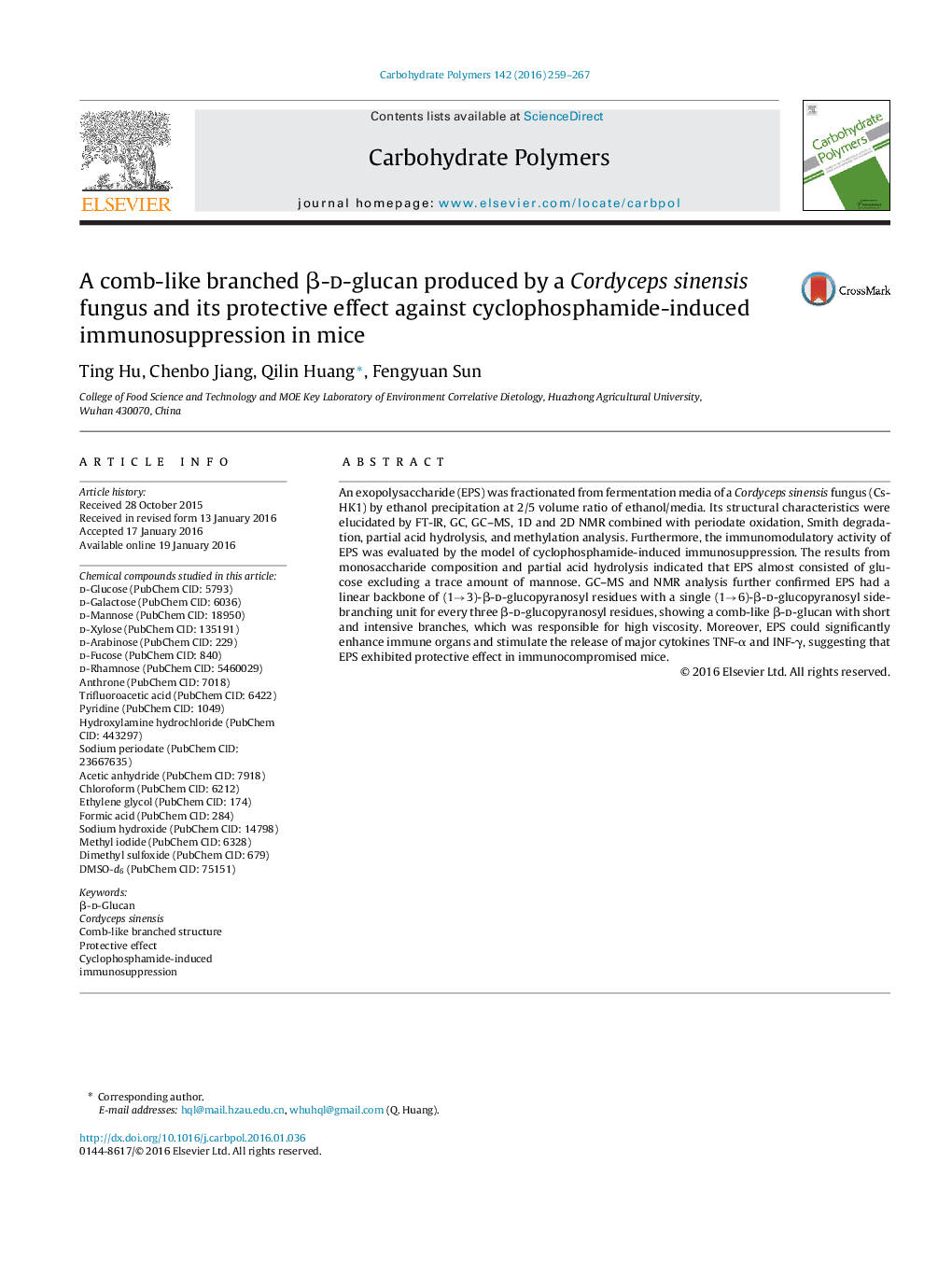| کد مقاله | کد نشریه | سال انتشار | مقاله انگلیسی | نسخه تمام متن |
|---|---|---|---|---|
| 1383324 | 1500616 | 2016 | 9 صفحه PDF | دانلود رایگان |

• EPS was isolated from fermentation media of a Cordyceps sinensis fungus (Cs-HK1).
• EPS was nearly composed of d-glucose excluding a trace amount of d-mannose.
• EPS consisted of (1→3)-β-glucan backbone with single (1→6)-β-glucose as side chain.
• EPS showed a comb-like structure with (1→6)-β-glucose branch on every three glucoses.
• EPS could improve the levels of TNF-α and INF-γ to enhance immunomodulatory ability.
An exopolysaccharide (EPS) was fractionated from fermentation media of a Cordyceps sinensis fungus (Cs-HK1) by ethanol precipitation at 2/5 volume ratio of ethanol/media. Its structural characteristics were elucidated by FT-IR, GC, GC–MS, 1D and 2D NMR combined with periodate oxidation, Smith degradation, partial acid hydrolysis, and methylation analysis. Furthermore, the immunomodulatory activity of EPS was evaluated by the model of cyclophosphamide-induced immunosuppression. The results from monosaccharide composition and partial acid hydrolysis indicated that EPS almost consisted of glucose excluding a trace amount of mannose. GC–MS and NMR analysis further confirmed EPS had a linear backbone of (1→3)-β-d-glucopyranosyl residues with a single (1→6)-β-d-glucopyranosyl side-branching unit for every three β-d-glucopyranosyl residues, showing a comb-like β-d-glucan with short and intensive branches, which was responsible for high viscosity. Moreover, EPS could significantly enhance immune organs and stimulate the release of major cytokines TNF-α and INF-γ, suggesting that EPS exhibited protective effect in immunocompromised mice.
Figure optionsDownload as PowerPoint slide
Journal: Carbohydrate Polymers - Volume 142, 20 May 2016, Pages 259–267